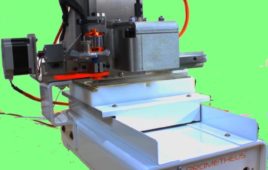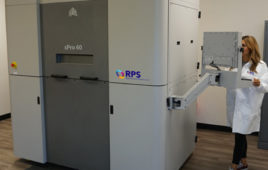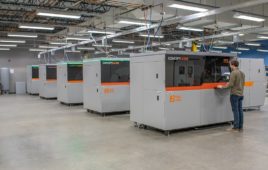It didn’t take long for the scientific community to react. Two weeks after the sacking of the 300 year-old Mosul Museum by a group of ISIS extremists went viral on Youtube, researchers from the ITN-DCH, IAPP and 4D-CH-WORLD projects launched Project MOSUL to virtually restore damaged artefacts and make them accessible from virtual museums.
“We assume that much of the museum’s contents were looted, and anything small enough to be easily removed will be appearing soon on the antiquities market. Anything too large to remove for sale, appears to have met a violent end at the hand of ISIS extremists. In both cases, it is possible to virtually recreate the lost items through the application of photogrammetry and crowdsourcing. Given enough photographs, digital or scans of analogs, it is possible to reconstruct the artifacts and create digital surrogates of those artefacts. This provides two immediate benefits: helping to identify looted items and recreating destroyed items,” the project website reads.
To reach this objective, the team is planning to use 4D-CH-WORLD’s technology to reconstruct and model Mosul artifacts virtually from crowd-sourced images available online. 4D-CH-World has spent the past two years designing what it calls the ‘first worldwide fully automated 4D reconstruction system capable of handling large image galleries in the wild.’
The result of this virtualization process is already showcased on the project website, where 3D models of artifacts such as the Lion of Mosul are made available. With only a dozen of pictures taken from different angles, the team is able to create a faithful copy of the original artifact.
Gathering these pictures, however, will not exactly be a walk in the park. The Mosul Museum is closed since the outbreak of the Iraq war in 2003, which means relevant images can prove very difficult to find. Pictures of the destroyed museum objects, including Assyrian and Hatrene artifacts, will be retrieved from Open Access repositories of FLICKR and PICASA, the EU digital library Europeana and anyone else willing to contribute images of his/her own. The team is also calling on volunteers to help them to sort and tag pictures, process them, take care of coding, etc.
Project MOSUL is coordinated by Dr. Marinos Ioannides at the Cyprus University of Technology, and Matthew Vincent and Chance M Coughenour, who are also members of the ITN-DCH (Initial Training Network for Digital Cultural Heritage: Projecting our Past to the Future) project.
ITN-DCH’s ultimate goal is to boost the added value of cultural heritage assets by re-using them in real application environments such as the protection of cultural heritage, education, tourism industry, advertising, fashion, films, music, publishing, video games and TV. If successful, Project MOSUL, will be a case in point for such novel applications.
For further information, please visit projectmosul.itn-dch.net/.
Filed Under: Rapid prototyping




